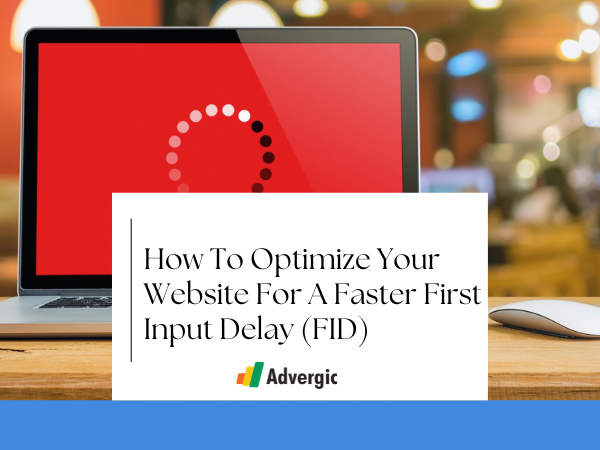A seamless user experience, improved search engine rankings, reduced bounce rates, increased conversions, mob…
A seamless user experience, improved search engine rankings, reduced bounce rates, increased conversions, mobile-friendliness, and a competitive edge depend on First Input Delay (FID) optimization. FID assesses how well your website responds to clicks and taps. Optimizing for First Input Delay (FID) ensures that your site responds quickly and smoothly to user interaction, improving user experience and engagement. More users stay on your site, interact more, and enjoy your brand.
Site Optimization for First Input Delay (FID)
First Input Delay (FID) optimization improves user experience and makes your website responsive and dynamic. FID assesses how long a web page takes to respond to the first click or tap. These steps can optimize your site for FID:
1: Reduce JavaScript execution:
Your website may slow down due to excessive JavaScript execution. Remove unnecessary code, reduce JavaScript file size, and defer non-critical scripts to optimize JavaScript consumption.
2. Optimize third-party scripts:
Assess how third-party scripts affect your website performance. Reduce or eliminate non-essential third-party scripts that slow user interaction.
3. Browser caching:
Use browser caching to save static resources on user devices. Caching resources speeds up website loading, lowering FID.
4. Split code and lazily load:
Split your JavaScript code and load only what you need for specific sites or interactions. Lazy loading can load JavaScript and other resources on demand, decreasing initial load time and increasing FID.
5. Improve CSS delivery:
Deliver CSS files efficiently. Load critical styles inline and delay non-critical stylesheets to reduce render-blocking CSS. Critical CSS production can extract and inline only the CSS needed for above-the-fold content.
6: Improve server response times:
FID reduction requires fast server response times. Work with your hosting provider to optimize server configurations, reduce latency, and speed up user requests.
7. Reduce lengthy tasks and computations:
Identify and optimize long or heavy computations that block the main thread and delay user engagement. Cut jobs into tiny pieces or use Web Workers to transfer processing to other threads.
- Assess performance regularly:
Use Google PageSpeed Insights, Lighthouse, or other performance monitoring tools to assess your website’s performance and identify areas for improvement. FID scores should be monitored and adjusted.
In conclusion, optimizing your site for First Input Delay (FID) improves user experience, search rankings, bounce rates, conversions, mobile-friendliness, and online competitiveness. Optimizing your website’s core web vitals is the first step to increase your ad revenue.
Have questions about Header bidding wrapper and price granularity?
Schedule a free consultation with our Header Bidding Expert today 📞

